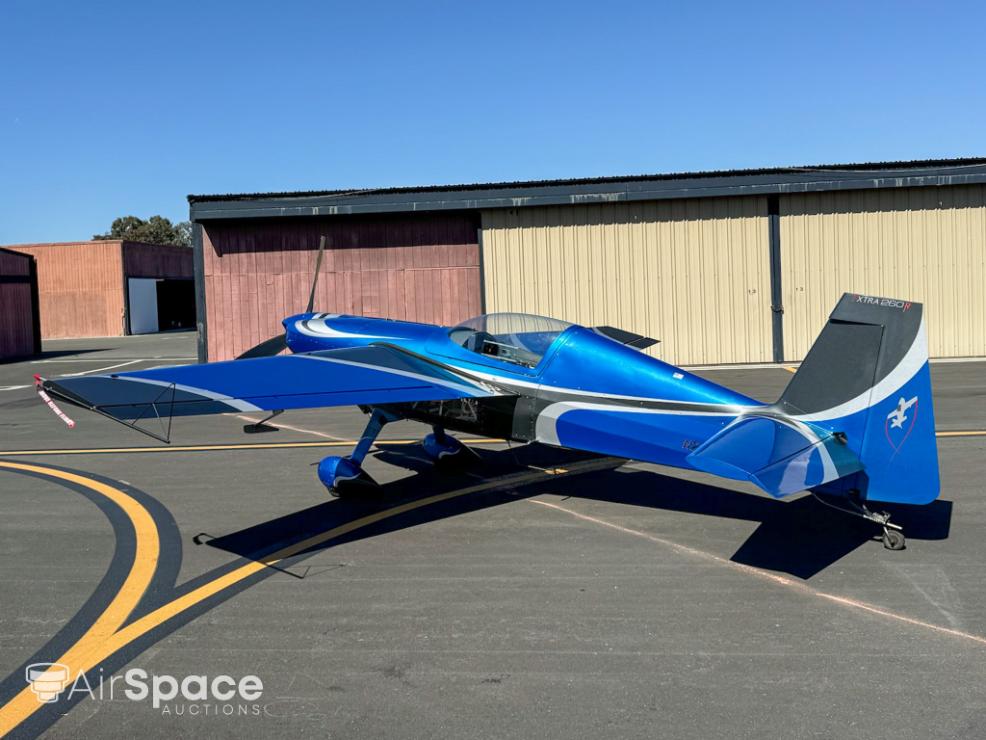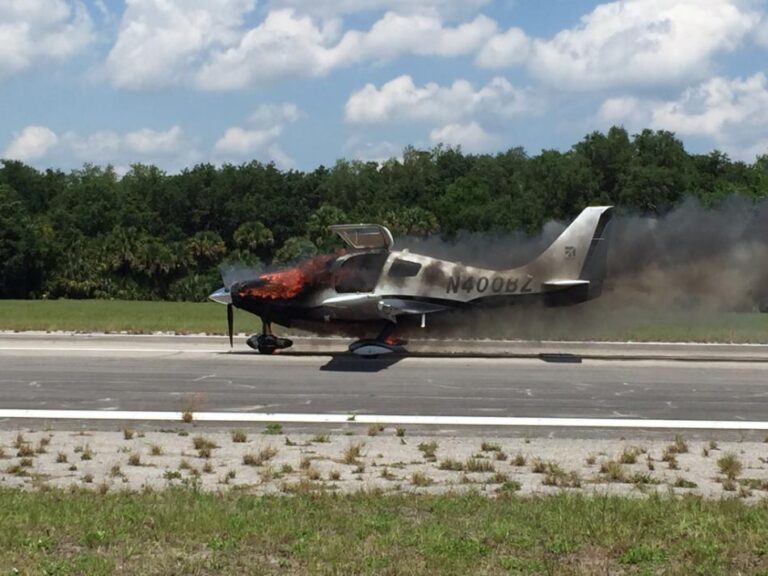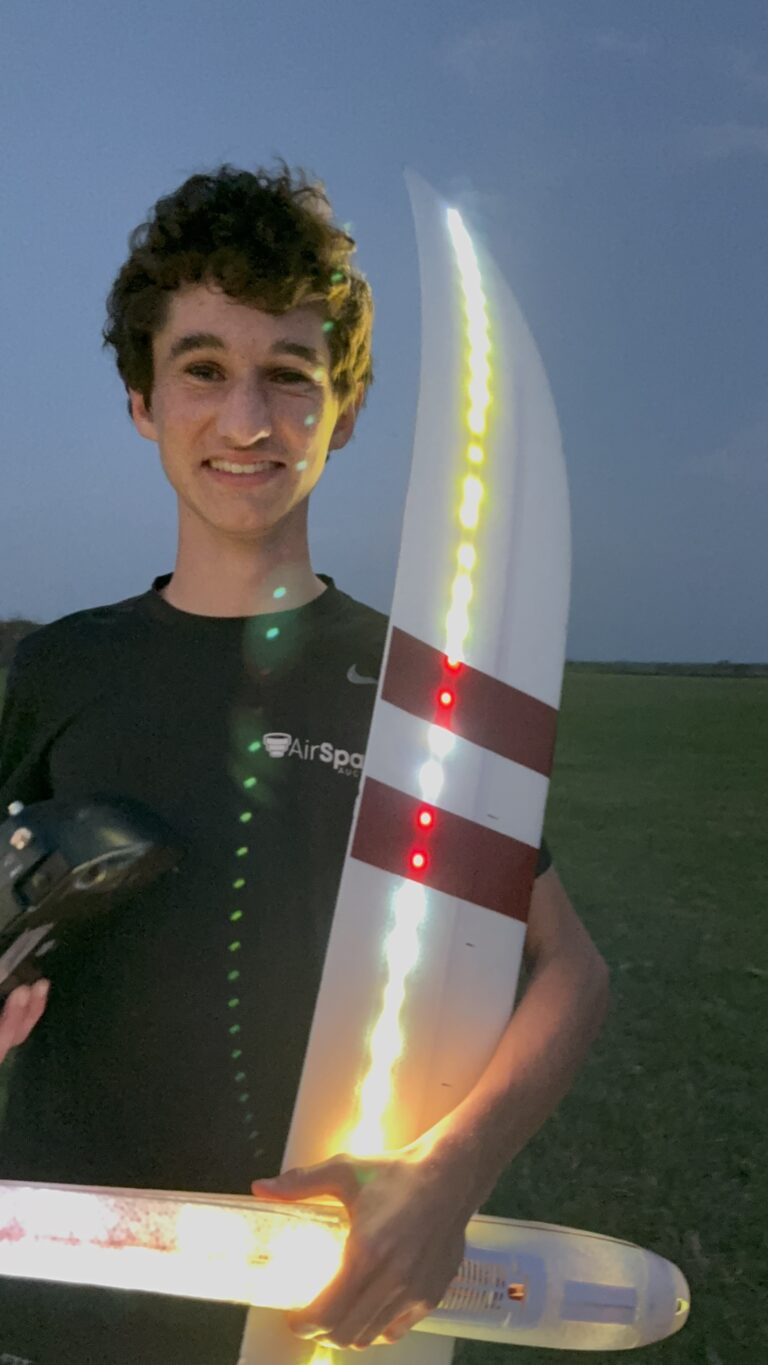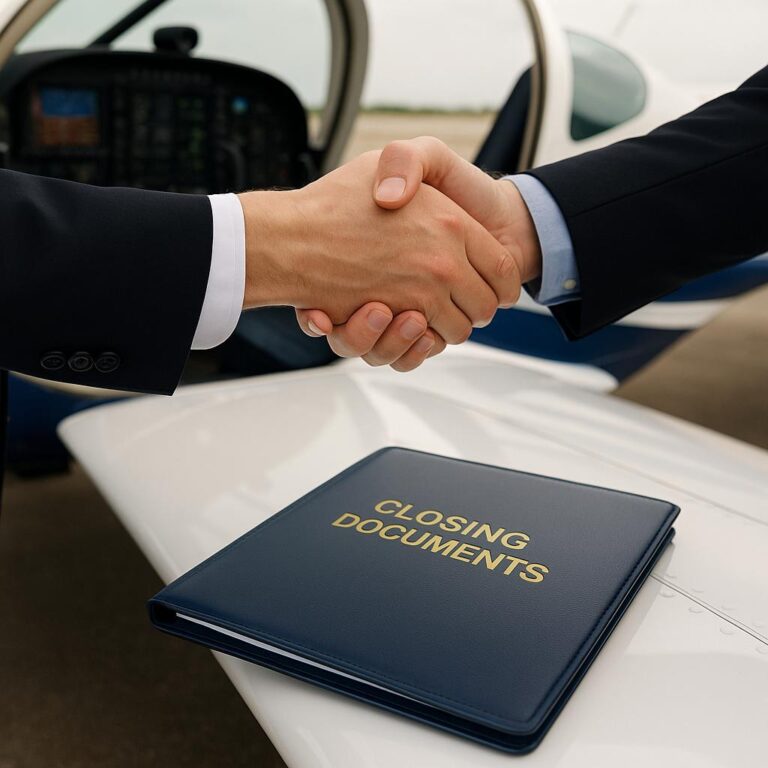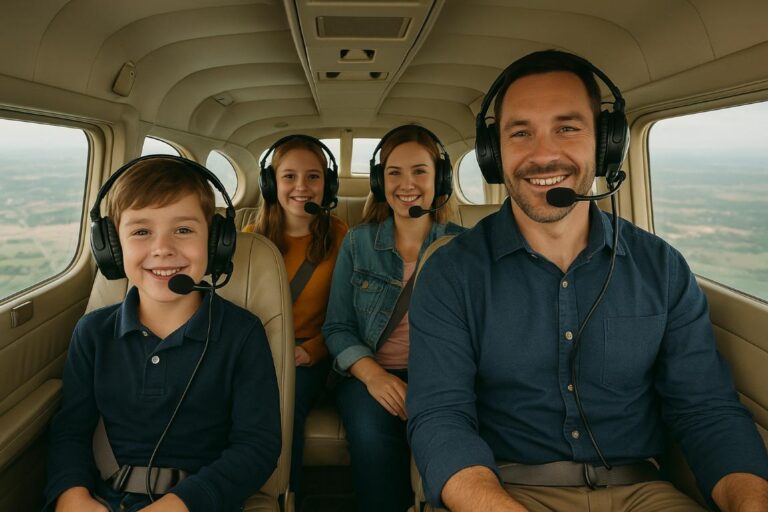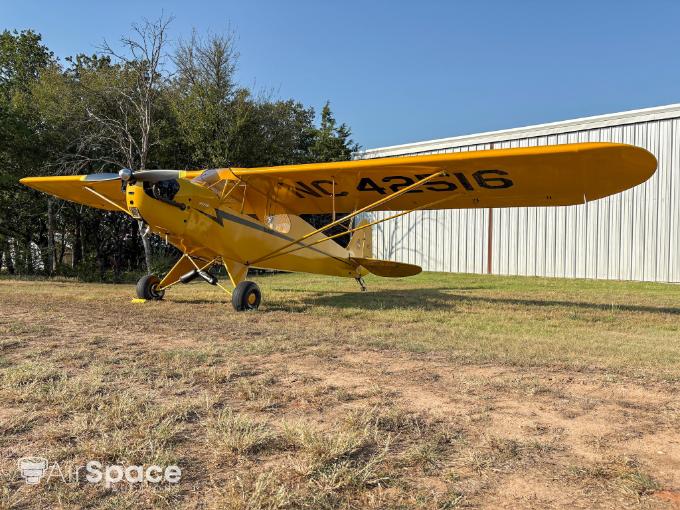1992 Extra 260: A Factory Assembled Masterpiece
The 1992 Extra 260 is a hallmark in the history of aerobatic aircraft, designed for precision, performance, and endurance. Built by Extra Flugzeugbau GMBH, it was factory-assembled, making it stand out as a reliable, high-performance aircraft. The Extra 260 is renowned for being an excellent aerobatic machine, preceding the popular Extra 300 series. Its unmatched balance of power, agility, and construction quality has kept it in demand among aerobatic enthusiasts.
This article dives into the 1992 Extra 260’s history, its various uses, and the legacy of Extra Flugzeugbau GMBH. We’ll explore what makes this particular model a prized possession and provide a detailed overview of its airframe, engine, propeller, avionics, interior, exterior, and additional features. This specific aircraft, N260EX, will also be featured in an upcoming auction, making it an exciting opportunity for enthusiasts and professionals alike to own a piece of aerobatic history.
History of the Extra 260
The Extra 260 was developed by Extra Flugzeugbau GMBH, a German manufacturer known for producing world-class aerobatic planes. Founded by Walter Extra in the early 1980s, the company made its mark with the Extra 230 before introducing the 260 model. The Extra 260 was built as a factory-assembled aircraft, meaning that it was produced under strict quality control, ensuring superior construction and reliability.
The Extra 260’s development set the stage for the more famous Extra 300 series, but it remains a cherished model due to its rarity and historical significance. Only four examples of the Extra 260 were ever built, making it an extremely sought-after aircraft among collectors and pilots alike. Patty Wagstaff, one of the most renowned aerobatic pilots in the world, flew an Extra 260 during her multiple national championship wins, and her aircraft is displayed in the Smithsonian’s National Air and Space Museum.
The Extra 260, with its sleek design and powerful engine, became the preferred aircraft for many aerobatic pilots who needed an agile and responsive machine. Its role as a bridge between the Extra 230 and the Extra 300 highlights its significance in the progression of aerobatic aviation design.

Uses of the Extra 260
The Extra 260 is primarily used for competitive aerobatics, recreational flying, and advanced flight training. Its aerobatic capabilities, combined with the power of the Lycoming AEIO-540 engine, make it a top choice for pilots looking to execute precision maneuvers, from loops and rolls to more advanced stunts.
With its factory-assembled design, the aircraft offers consistent performance, ensuring pilots can push the boundaries of flight while maintaining safety. The 260’s lightweight airframe and powerful engine also make it an ideal choice for those participating in aerobatic competitions, where every ounce of weight and horsepower matters.
Additionally, the Extra 260 serves as a solid training aircraft for advanced pilots. Its design allows it to handle complex maneuvers, providing an excellent platform for pilots transitioning from basic aerobatics to more demanding routines.
Extra Flugzeugbau GMBH: A Legacy of Excellence
Extra Flugzeugbau GMBH has been at the forefront of aerobatic aircraft design for decades. Founded by Walter Extra, a competitive aerobatic pilot himself, the company has produced aircraft that continue to dominate in aerobatic competitions worldwide. The factory-assembled process ensures that each Extra aircraft is built to the highest standards, allowing for superior performance and reliability.
The Extra 260, built with meticulous attention to detail, set the stage for the later Extra 300 series. While only four units were made, its legacy lives on in the countless aerobatic achievements made possible by its design. The company’s dedication to creating agile, high-performance planes has made it a favorite among aerobatic professionals and recreational pilots alike.

Factory Assembled: A Key Highlight
One of the standout features of the Extra 260 is that it was factory-assembled, ensuring consistency in quality, durability, and performance. Unlike kit-built experimental aircraft, which may have varying levels of craftsmanship, the factory-assembled nature of the Extra 260 guarantees that it adheres to stringent manufacturing standards.
This feature adds to its reliability, making it a dependable choice for pilots who demand both precision and safety. The factory assembly process is especially important for aerobatic aircraft, where high-stress maneuvers can test the limits of the airframe and engine. Knowing that the Extra 260 was built under controlled conditions adds significant value to this aircraft.
Now, let’s take a closer look at the specific features of the 1992 Extra 260 that make it a standout aircraft in the world of aerobatics.
Airframe
The 1992 Extra Flugzeugbau GMBH 260, registration N260EX, is in exceptional condition with a total time of 809 hours. Its serial number is 003, making it one of the four Extra 260s ever built. The aircraft’s airframe is known for its lightweight, high-strength design, built to withstand the high G-forces experienced during aerobatic flight.
With a fuel capacity of 18 gallons in the acro tank and an additional 15 gallons per wing for ferry flights, this aircraft can support a wide range of flight profiles. The aircraft’s stall speed is 60 knots, and it has a useful load of 563 pounds. It boasts a range of 480 nautical miles when cruising at 75% power and a speed of 165 knots. The last Condition Inspection was conducted on January 19, 2024, ensuring the aircraft remains in peak condition.

Engine
The Extra 260 is powered by a Lycoming AEIO-540-EXP engine, serial number L-56224-19E. The engine was overhauled by LY-CON in February 2019 and has logged only 306 hours since the overhaul (SMOH). Known for its power and reliability, the Lycoming AEIO-540 provides the necessary thrust and durability for high-performance aerobatics.
This six-cylinder engine is specially designed for inverted flight, making it an ideal choice for aerobatic planes like the Extra 260. Its overhaul by a reputable facility like LY-CON ensures that it will continue to deliver top-tier performance for many years to come.
Propeller
The aircraft is equipped with an MT Model MTV-9-B-C/C203-25 propeller, which was overhauled in January 2023 by Sullivan Propeller Specialists. The propeller has only 52.3 hours since its overhaul. Its three-blade design complements the power of the Lycoming engine, providing smooth, consistent thrust during both standard and inverted flight maneuvers.
This recently overhauled prop ensures optimal performance, reducing drag and improving the aircraft’s overall efficiency during high-speed aerobatics.

Avionics
The avionics suite of this Extra 260 is well-equipped for both aerobatics and general flight. The aircraft features a Garmin G3 PFD (Primary Flight Display), which provides critical flight information in an easy-to-read format. The Acroworks logging device tracks all flight data, a crucial tool for aerobatic pilots who need detailed records of their flights.
Additional avionics include a Garmin SL40 radio for communication, a Garmin ADS-B Out for traffic awareness, and a TruTrack Vision 380/385 autopilot with altitude hold and leveling functions. A Bendix/King AeroCruze 100 autopilot is also installed, making cross-country flights more manageable. Traditional instruments such as the airspeed indicator, altimeter, directional gyro, and G meter round out the avionics suite, ensuring pilots have all the tools they need for safe and precise flying.

Exterior
The exterior of N260EX features a striking combination of blue, silver, and black, with small red accents that give it a sleek, aerodynamic look. The aircraft was repainted in October 2001 after it sustained damage during an off-airport landing caused by fuel exhaustion. Following the incident, the aircraft was repaired and returned to service, and the new paint job has held up remarkably well, showcasing the plane’s excellent care over the years.
Interior
The cockpit of this Extra 260 is minimalist, designed for functionality and performance. It features a carbon fiber panel and gray leather seats with red inserts, adding a touch of style to its otherwise raw and practical interior. The cockpit is built for one pilot, reflecting its purpose as an experimental aerobatic aircraft. Despite the stripped-down design, the seating and controls are ergonomic, allowing pilots to focus on flying without distraction.
Additional Features
This Extra 260 comes with several additional features that enhance its usability and protection. A canopy cover, pitot cover, and cowl plugs are included, ensuring the aircraft stays protected when not in use. This particular aircraft was formerly registered under the Hungarian registration number HA-SIO. Its complete repair and return to service in 2001 make it an excellent example of a well-maintained, factory-assembled experimental aircraft.

Auction Information
This 1992 Extra 260, N260EX, will be up for auction from November 20-27, 2024. With a starting bid of $75,000 and a buyer premium of 6%, this is a rare opportunity to own one of only four Extra 260s ever built. A $3,000 deposit is required to participate in the auction.
For anyone looking to enter the world of Extra ownership or expand their aerobatic capabilities, this aircraft represents a unique and valuable opportunity. Its factory-assembled build, recent overhauls, and well-cared-for condition make it an appealing choice for pilots and collectors alike.
Conclusion
The 1992 Extra 260 is an exceptional aerobatic aircraft with a storied history, built by a company renowned for its high-performance, factory-assembled planes. With only four units produced, this aircraft is a rare find, combining performance, agility, and reliability. Its current condition, with recent engine and propeller overhauls, makes it a fantastic opportunity for the right buyer.
For those passionate about aerobatics or looking for a unique addition to their collection, the upcoming auction of N260EX is an event not to be missed. Don’t miss your chance to own a piece of aviation history.



